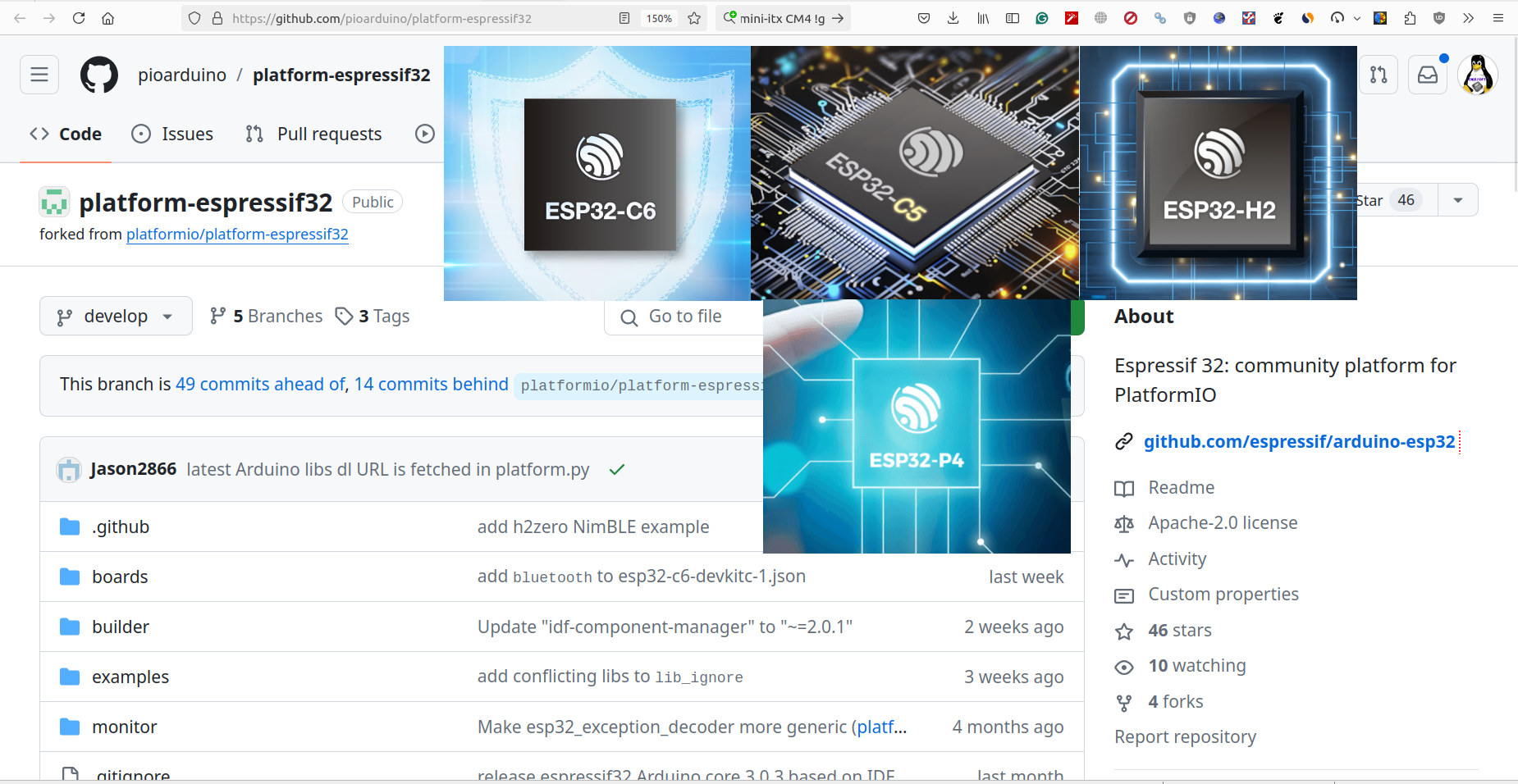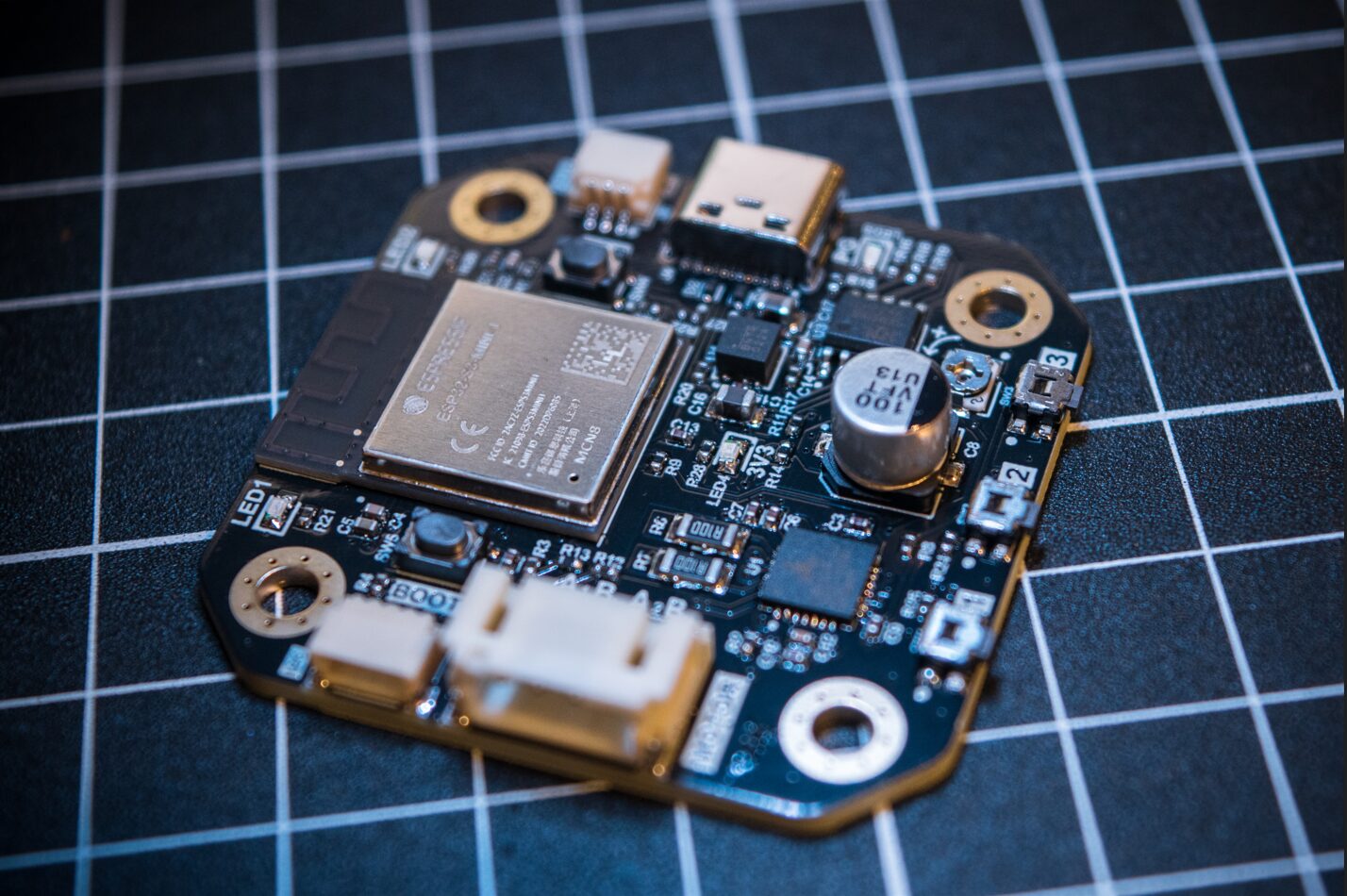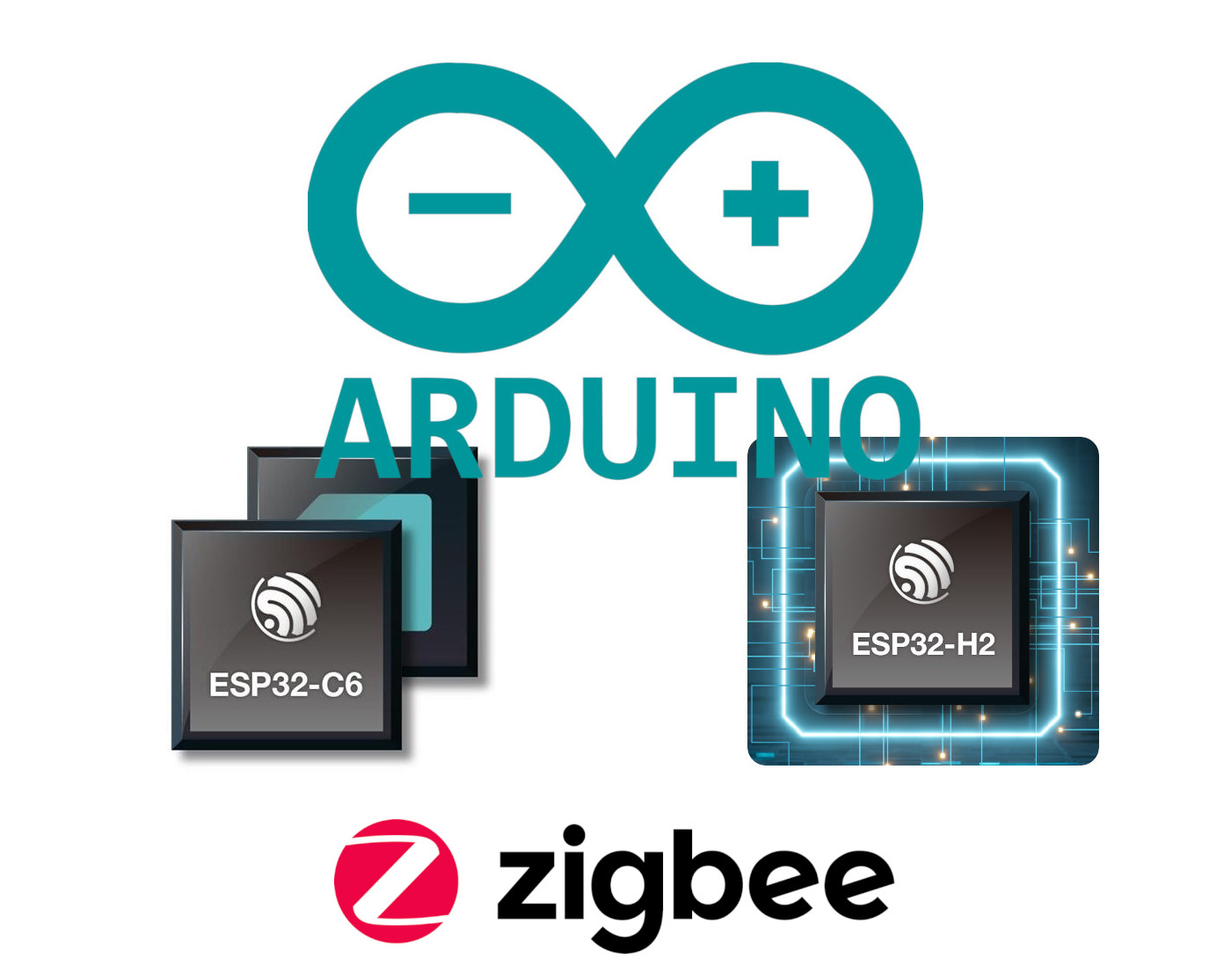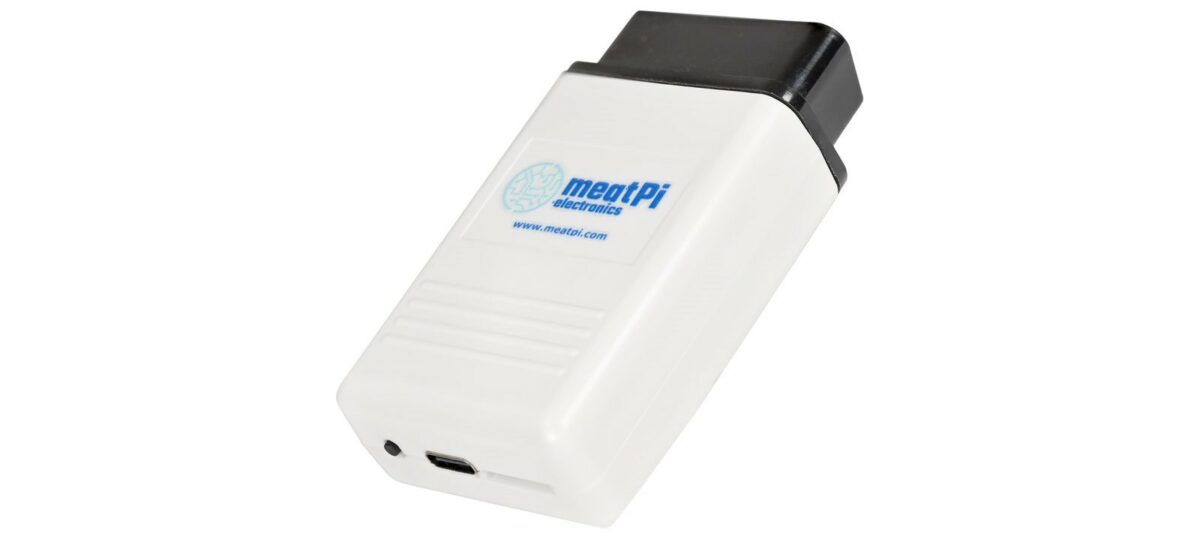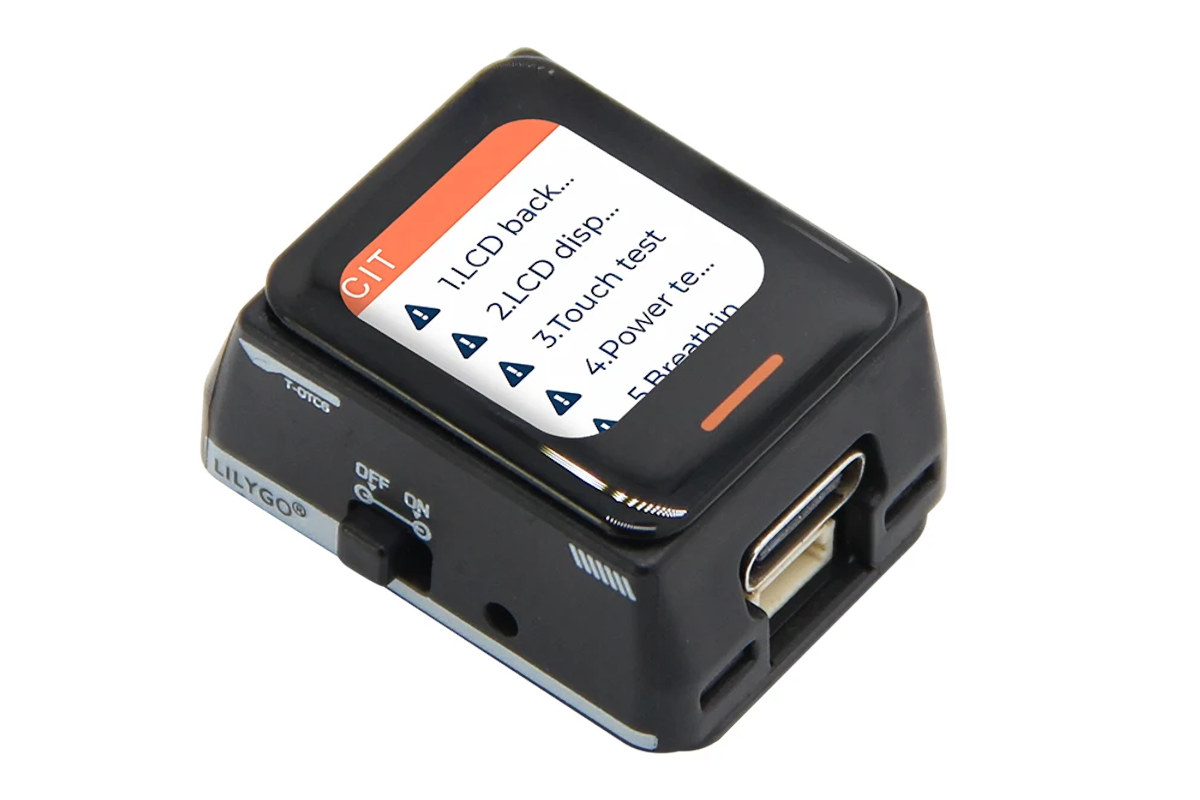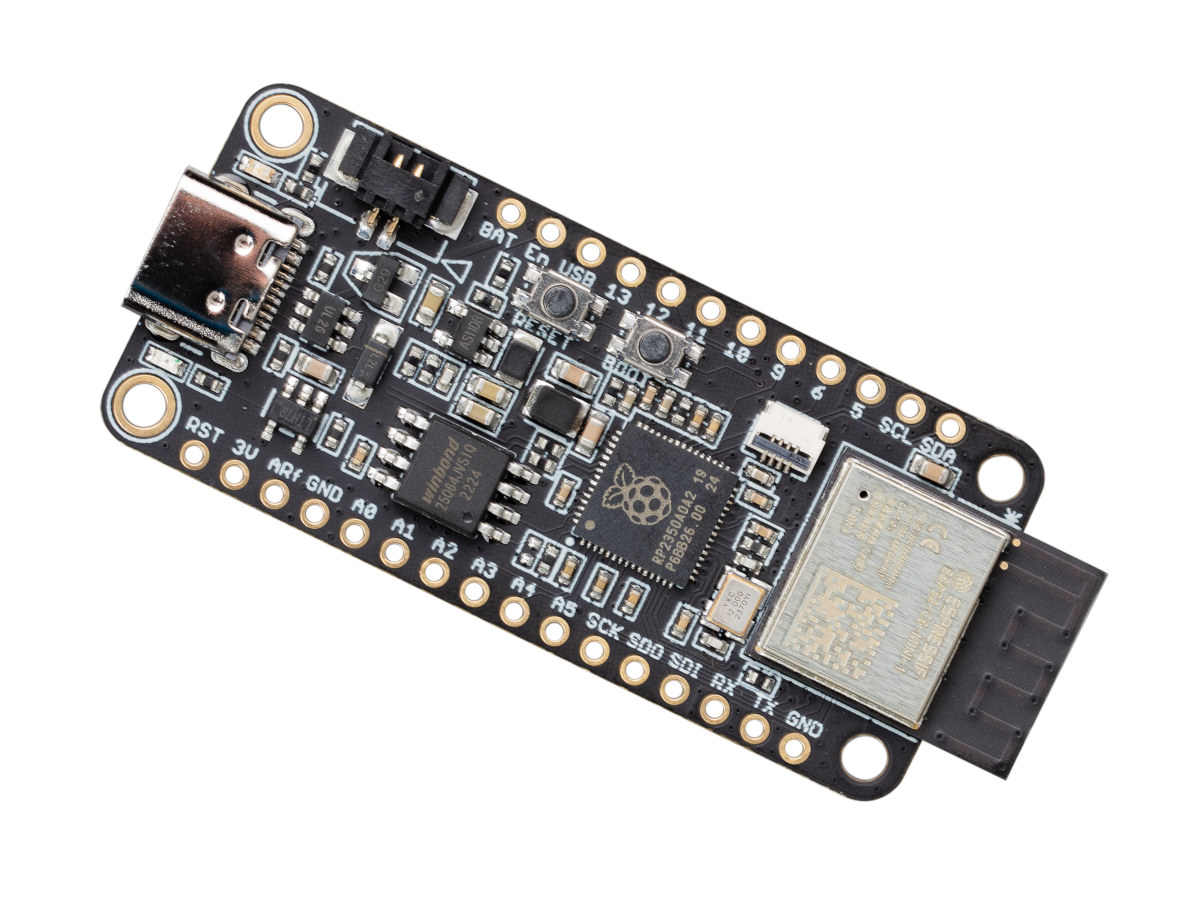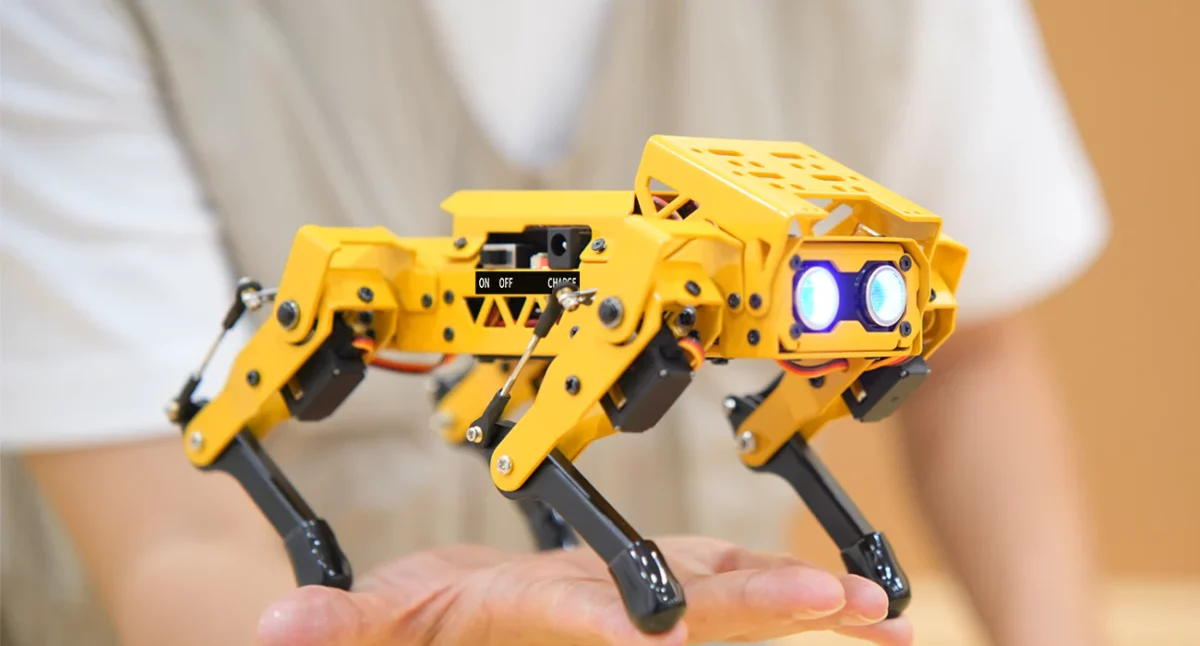When Espressif Systems released Arduino ESP32 Core 3.0.0 we noted that PlatformIO support was in doubt due to business issues between Espressif and Platform IO developers. There has been no progress since then, and PlatformIO is not even reviewing or merging community contributions to their platform-espressif32 library. So if you want software that’s officially supported by Espressif, you should stick to the Arduino ESP32 Core. But if you are a fan of PlatformIO for ESP32, there’s hope even for the newer chips like ESP32-C6, ESP32-H2, and ESP32-P4 among others, as pioarduino community members have now forked the platform-espressif32 library to keep the project alive. Users can still rely on the official PlatformIO repository for existing ESP32 boards and microcontrollers, but new ESP32-C6, ESP32-H2, ESP32-C5, ESP32-H4, and ESP32-P4 SoC will only be supported by the fork. pioarduino which stands for “people initiated optimized arduino” will maintain the fork, and currently, Arduino […]
Integrated motor driver and controller bundles ESP32-S3 and TMC2209 for IoT applications
The PD Stepper is a NEMA 17 integrated stepper motor driver and controller board powered by USB power delivery that combines an ESP32-S3 wireless microcontroller, the Trinamic TMC2209 ultra-silent motor driver, and other components onto a single board for Smart Home and automation applications. The maker, Josh R., states that the PD Stepper isn’t another “just because we can” project. It addresses the need for an integrated motor driver and controller module that can used in compact or space-constrained designs. The ESP32-S3 SoC controls the other components on the board and provides wireless connectivity as well as access to development tools and libraries such as ESPHome and ESP-Now. The motor driver IC, Analog Devices’s Trinamic TMC2209, offers efficient, noiseless control of two-phase stepper motors. Other onboard components and connectors include an AS5600 magnetic rotary position sensor, a 3.3V buck converter, a Qwiic/Stemma QT connector, a motor connector, and an AUX […]
Arduino Core for ESP32 gets a Zigbee wrapper library
Some of the newer Espressif Systems wireless SoCs such as the ESP32-H2 and ESP32-C6 support Zigbee through their built-in 802.15.4 radio. It’s been working since the release of the ESP-IDF 5.1 framework along with the ESP-Zigbee-SDK for a while, but Arduino support was less straightforward. But this is about to change as an Espressif engineer nicknamed P-R-O-C-H-Y has recently added a Zigbee wrapper library for the ESP-Zigbee-SDK to Arduino Core for ESP32 that works with ESP32-C6 and ESP32-H2 as standalone nodes and other SoC can be used as radio co-processor attached to an RPC (802.15.4 radio layer). The wrapper library currently supports the following: Zigbee classes and all Zigbee roles Zigbee network scanning Allow multiple endpoints on the same Zigbee device (not tested yet) Supported Home Assistant devices On/off light + switch Color Dimmable light + switch Setting Manufacturer and model name Other tasks currently planned include supporting “Temperature sensor […]
WiCAN Pro – An ESP32-S3-powered OBD scanner for vehicle diagnostics with Smart Home integration (Crowdfunding)
MeatPi Electronics introduced the WiCAN Pro, an ESP32-S3-based OBD scanner, and the successor to WiCAN-OBD. Equipped with an OBD-II interface IC, it provides full support for all legislated OBD-II protocols. It offers compatibility with multiple CAN Bus protocols, including three standard CAN Bus and single-wire CAN Bus. The previous generation WiCAN module came in an OBD or USB-based version. The WiCAN Pro only has an OBD interface, but another significant difference from the previous product is that it features a USB host port. This port can power USB devices up to 1.5 amps at 5 volts and enables capabilities like adding GPS or cellular-based radios, like with meatPi’s ESPNetLink add-on. WiCAN Pro specifications: Wireless Module – ESP32-S3-WROOM-1-N16R8 SoC – Espressif Systems ESP32-S3R8 dual-core Tensilica LX7 @ up to 240 MHz with vector instructions for AI acceleration, 512KB RAM, 8MB PSRAM Storage – 16 MB flash Wireless – 2.4 GHz WiFi […]
$119 MoreSense MS-06 air quality monitor features a Sensirion SCD40 sensor and an ESP32-S3 MCU
The MoreSense MS-06 is an ESP32-S3-based air quality monitor that takes CO², temperature, and humidity readings through a Sensirion SCD40 sensor which offers reliable performance and a lifespan of more than ten years. The MS-06 monitor’s results are identical to the Aranet4’s (considered best-in-class), putting it in a pretty good spot accuracy-wise. It is the latest entry in the MoreSense line of air quality monitors and comes with a more compact design and a touchscreen display. The built-in web server runs an interface that displays measurements, historical data visualizations, setup options, and firmware updates. Operation is completely local; sensor data can be stored on the device or a microSD card. The MoreSense MS-06 air quality sensor can be used to control a ventilation system, contributing to significant energy savings. This can be achieved through your home automation system or by using a smart plug. MoreSense MS-06 specifications: Microcontroller – ESP32-S3 […]
LILYGO T-QTC6 – An ESP32-C6 IoT controller with a 0.85-inch touchscreen LCD
LILYGO T-QTC6 is a cute little IoT controller based on an ESP32-C6 WiFi 6, Bluetooth 5.4 LE, and 802.15.4 wireless microcontroller and a 0.85-inch touchscreen color LCD that can be powered via USB-C or a LiPo battery with the board also supporting charging. The device, sometimes called “T-QT C6” (with a space), also comes with an 8-pin female connector with five GPIOs and a Qwiic connector for UART modules. It’s another addition to the T-QT family with ESP32 wireless microcontrollers and a tiny 0.85-inch display such as the T-QT Pro or the T-QT V1.1. But note that those are development boards, while the T-QTC6 feels more like a complete device. LILYGO T-QTC6 specifications: Wireless Module – Espressif Systems ESP32-C6-MINI-1U SoC – ESP32-C6-FH4 32-bit RISC-V microprocessor up to 160 MHz with 320KB ROM, 512KB HP SRAM, 16KB LP SRAM, 4MB flash Memory – 4MB PSRAM (TBC) Wireless 2.4 GHz WiFi 6 […]
Challenger+ RP2350 WiFi6/BLE5 board combines Raspberry Pi RP2350 MCU with ESP32-C6 WiFi 6 and Bluetooth 5.4 LE module
You don’t need to wait for the Raspberry Pi Pico 2 W to get a Raspberry Pi RP2350 board with WiFi and Bluetooth thanks to the Challenger+ RP2350 WiFi6/BLE5 board that combines an RP2350A microcontroller with an ESP32-C6 module offering 2.4 GHz WiFi 6 and Bluetooth 5.4 LE connectivity. The board follows the Adafruit Feather form factor with 28-pin through holes for I/Os making it compatible with FeatherWings add-on boards. It comes with a USB-C port for power and programming, and a JST connector plus a charging circuit for people wanting to connect a LiPo battery. Challenger+ RP2350 WiFi6/BLE5 specifications: Microcontroller – Raspberry Pi RP2350A MCU CPU Dual-core Arm Cortex-M33 processor @ 150MHz Dual-core 32-bit RISC-V processor @ 150MHz Only two cores can be used at a given time Memory – 520KB internal RAM 8KB OTP Storage Package – QFN-60; 7×7 mm Memory – 8MB PSRAM Storage – 8MB SPI […]
MechDog AI Robot Dog features ESP32-S3 controller, supports Scratch, Python, and Arduino programming
Hiwonder’s MechDog is a compact AI robot dog powered by an ESP32-S3 controller that drives eight high-speed coreless servos. It features built-in inverse kinematics for precise and agile movements and has ports for various I2C sensors such as ultrasonic and IMU sensors. The robot is equipped with a durable aluminum alloy frame and a removable 7.4V 1,500mAh lithium battery for power. MechDog integrates with the ESP32-S3 AI vision module, supporting dual-mode network communication either AP Hotspot Direct Connection Mode or STA LAN Mode so that users can access a designated URL webpage via an app or PC for real-time monitoring using a high-definition camera. Also, this robot dog supports various sensor modules, including a touch sensor, light sensor, dot matrix display, and programmable MP3 module, allowing for secondary development and expansion, offering extensive creative possibilities. Previously, we wrote about the Waveshare UGV AI Rover, which features a 2mm thick aluminum […]


